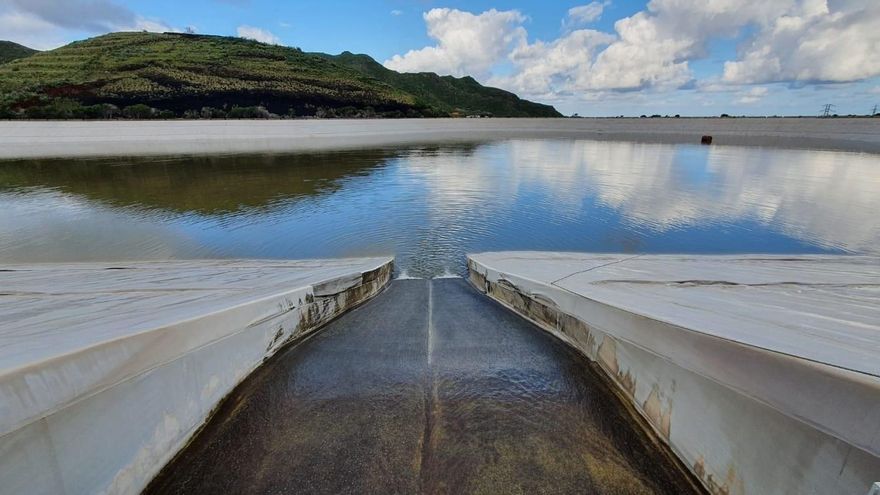
The Council of Tenerifethrough the public company Balsas de Tenerife (Balten)will allocate 7,038,611 euros to modernize and optimize the island’s public irrigation system, As explained by the island councilor for Agriculture, Livestock and Fisheries, Javier Parrilla, who puts ten actions aimed at the renovation of facilities and equipment, the application of new technologies and renewable energies to improve the efficiency of the service.
Javier Parrilla reported that The contracting process for the re-waterproofing of the Barranco de Benijos pond has already begun (La Orotava), which has a budget of 1,145,458 euros “and which will continue the pond re-waterproofing plan started in 2020”. It is the fourth largest pool in the north of Tenerife, with a capacity of 206,373 cubic meters.
He also recalled that the first and only waterproofing carried out in the Benijos reservoir took place in 1986, so “although the behavior of the sheet has been better than expected, it has reached the end of its useful life, determined in 10 years, and it is advisable to replace it”. To guarantee irrigation and cover the needs of farmers while the works last, a temporary deposit will be set up, with a capacity of 400 cubic meters.
Another outstanding performance will be the renovation of the meter park. “According to current regulations, meters older than 12 years must be replaced, at the expense of the owner. For this reason, El Cabido has begun the renovation of these devices with its own funds and at no cost to users“, explained the counselor.
The Island Corporation will allocate 1.2 million euros to change the 3,500 oldest meters, “which will have remote management and remote control capacity in terms of flow measurement by Balten”, although the multi-year plan is endowed with 7 million euros.
Likewise, the comprehensive rehabilitation of the reclaimed water transport system will begin from Santa Cruz to the Valle San Lorenzo reservoir, in Arona, with an initial cost of 1,409,000 euros. It is a system 66 kilometers away and more than 30 years old that guarantees the irrigation of 800 hectares of irrigated land “and was built as the main artery in a fundamental irrigation water transport system for the island “.
Currently, this system is complemented by the conveyance of regenerated water from the Adeje-Arona station, whose objective is to transport quality water to Santiago del Teide.
Other actions will also be carried out, such as the acquisition of the Chío irrigation network, which will include the renovation of the reading equipment, for a total of 817,929 euros or the renovation of the Pláceres-Camino la Romera branch, for 65,000 euros, “whose works are about to start.
IMPLEMENTATION OF RENEWABLE ENERGY
With a budget of 1,383,958 euros, the Renewable Energy Implementation Plan “It will be the cornerstone in the application of new technologies and renewable energies,” said Javier Parrilla. It will be developed in two phases and will intervene in 8 Balten installations, which will result in an average saving of 265,000 euros in electricity bills per year and in a 20 percent reduction in consumption.
“If we want to have a better future, we must balance, if not eliminate, energy costs. In a globalized context, the consequences of energy dependence and the application of renewable energies must also be a pillar for irrigation water. In this process, the coordination with the Office of Renewable Energies established by this insular government and directed by the councilor Javier Rodríguez Medina, is intense.This plan must be the first step on a path where we will go hand in hand working against the effects of change climate””, declared the counselor.
Added to these actions is the installation, worth 200,000 euros, of a remote control system in the Valle San Lorenzo network; security actions at the facilities (202,000 euros); or the renovation of the computer equipment, with the aim of achieving the efficiency of the agricultural water supply service provided by Balten.
In the same way, 600,000 euros will be allocated to start up works to drive the water from Guayonge to the Fray Diego reservoir, in Tacoronte, which will allow, in the medium term, the extension of the irrigation system with reclaimed water.















